
CAROL’S MARY PEGRAM CHARACTERISTICS TO APPLY TO COSTUMING
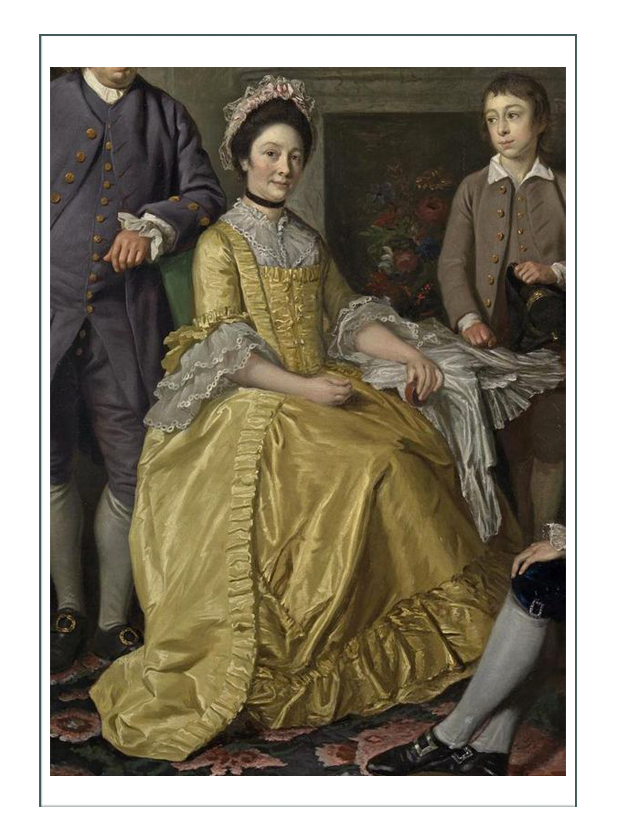
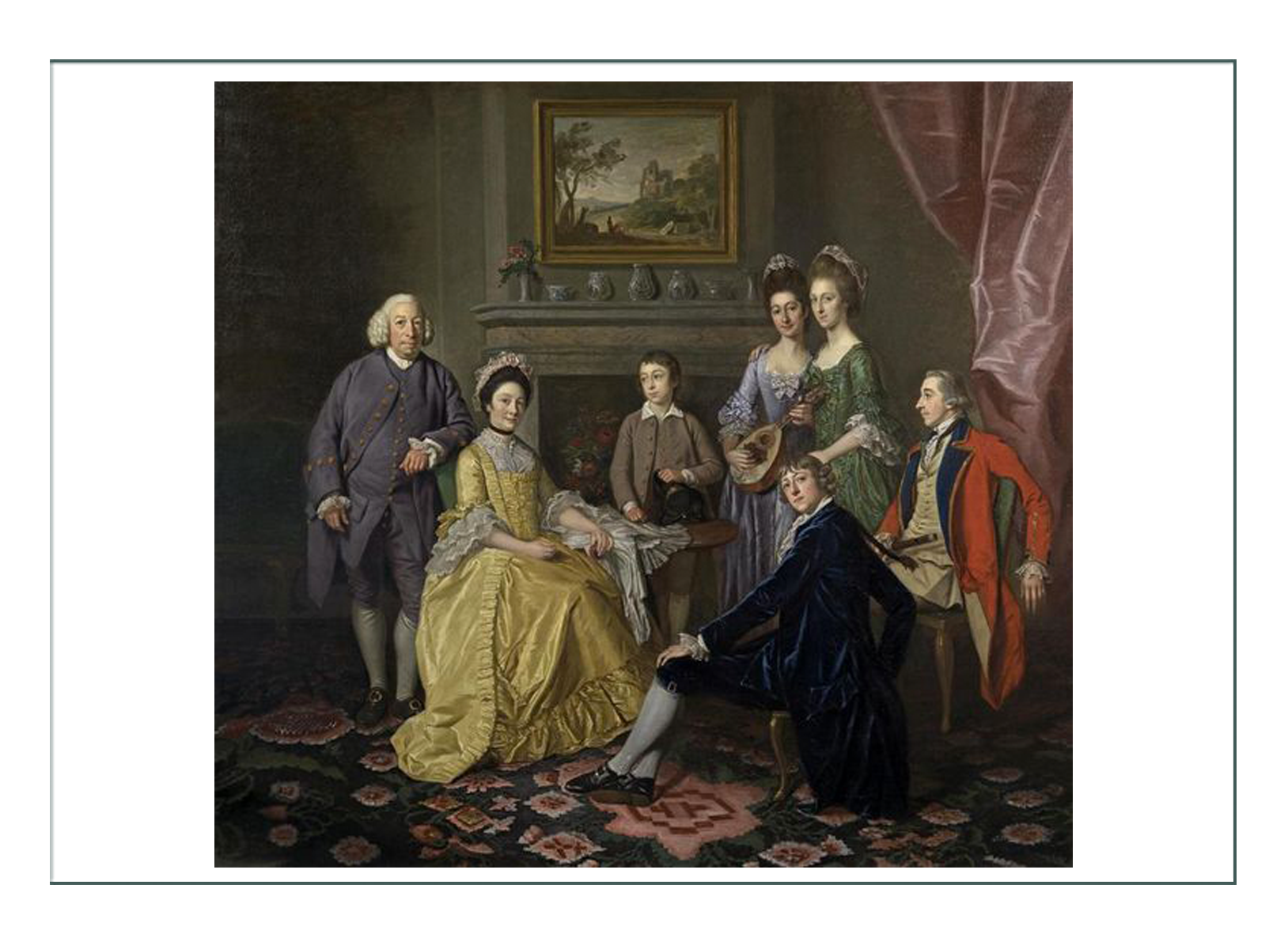
Mary would have been “upper middle class”; definitely not the lifestyle nor status to which she was raised and educated. From what we know about girls from 1740 English nobility was that they were sequestered, raised in the “arts”, and taught to be wives. She would have been able to ride a horse, sew, do fancy work, and plan and organize events, but most likely had servants, and would not have known how to cook or do work with her hands.
Mary would have replaced her servants with slaves. She would have placed value on social events, and probably was known for her own events and social activities.
Fashion and appearances would have been very important to Mary. While embracing the new colonial lifestyle, and probably trying to stay out of the conflict as she had family and friends on both sides, she probably would want to be a leader in fashion and etiquette, and would have picked her friends for their wealth and status.
Humbled a bit by having to start life anew with a working man rather than noble, she would have gained some skills, but most likely handed those off as soon as possible. Their early married life in Williamsburg most likely had house servants which she took with the move to Bonneville.
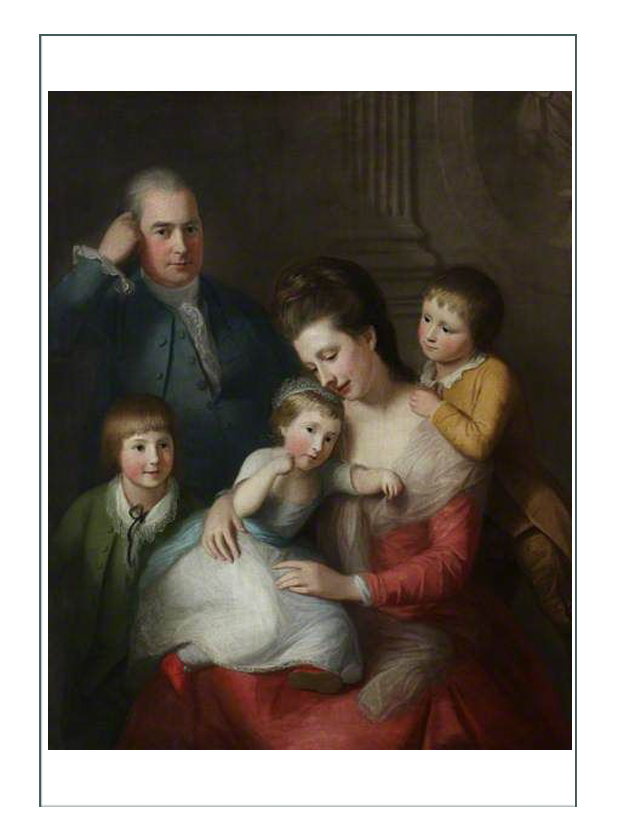
Somewhat flamboyant, and having enough money to buy imported goods, her fabrics would have been imported – dyed cottons and silks most likely, Because she had so many children, her clothing (stays) would have had to accommodate pregnancy and childbirth continuously.
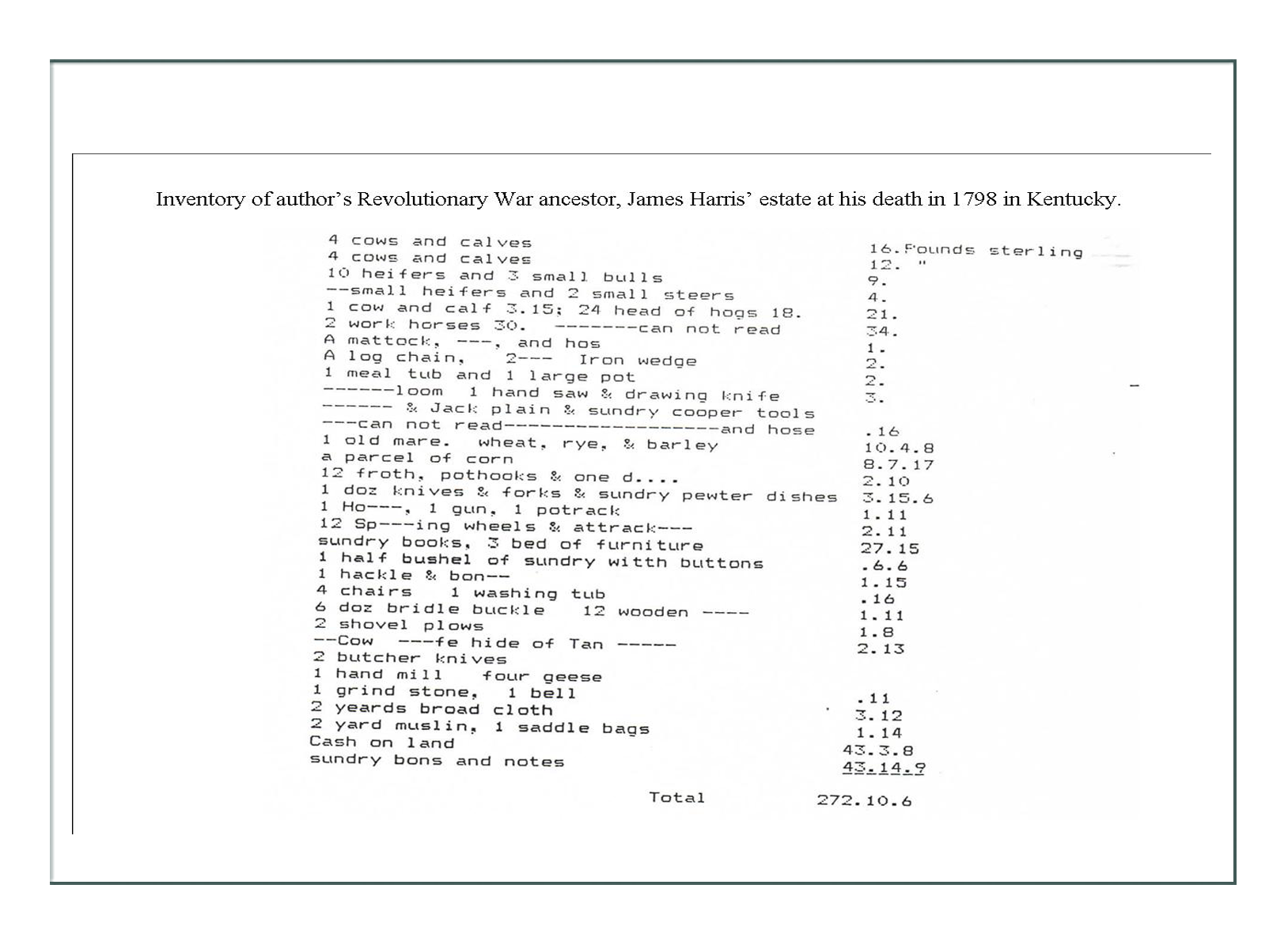
One wonders if her death was that she just wore out.. 11 children in 24 years would mean she was almost always pregnant or nursing. Her death at age 56 would put her right in the beginning of menopause. Perhaps women of that era had cancers or maladies that arose from hormonal issues from excessive childbirth going into pregnancy. As there are no records, one would more likely guess she had a stroke or illness for which they had no vaccinations nor antibiotics; possibly something she shared with her slaves.
One doubts if she was a kind and benevolent slave holder, given her background and the fact her husband is documented to have beaten a slave to death. She would have definitely been the “lesser party” in the marriage, and kept to assigned role as the woman. All records indicate her husband owned everything; she had no will at her death, which was typical of the era.
One would guess Mary carried through her life some sense of loss for the whole world she left behind that had been changing, and the people she left there. Perhaps she visited England and caught up on the latest and visited relatives, although during her lifetime, France and England were at war, and there is no record of her traveling.


FASHION SPECIFICS INTERPRETED
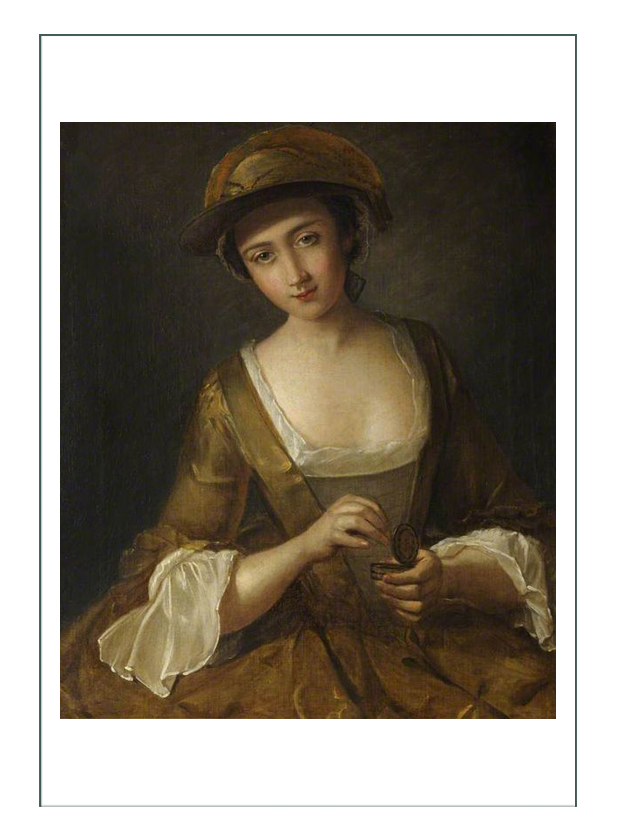 Mary’s clothes would have been English inspired, with a dash of practicality for the Virginia heat and new American culture. During the war, with imports being restricted (tea, silk, cotton), she would have had to “make do”; reuse and repurpose things, especially with 8 kids of all ages at home.
Mary’s clothes would have been English inspired, with a dash of practicality for the Virginia heat and new American culture. During the war, with imports being restricted (tea, silk, cotton), she would have had to “make do”; reuse and repurpose things, especially with 8 kids of all ages at home.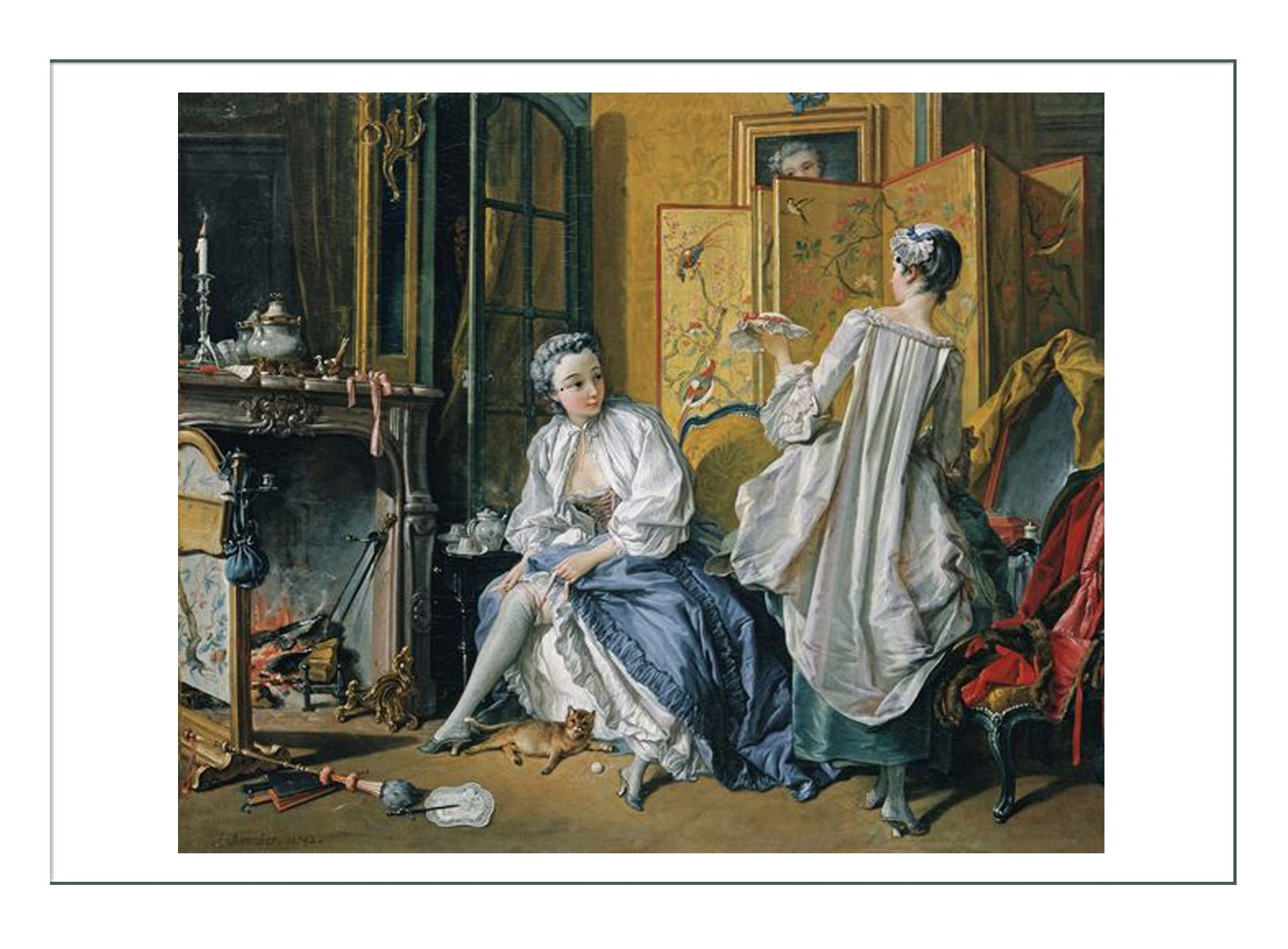
She would have added all the practicalities of clogs for her shoes to stay out of the mud (it rains in VA!), varying outerwear, dressy clothes, and around home clothes. She probably would have “stretched” for economy things that weren’t seen, such as having practical undergarments, while her outerwear was fashionable. She would have to be a good organizer, while Edward was most likely a very strict disciplinarian (coming from the strict Angelican/Methodist roots).
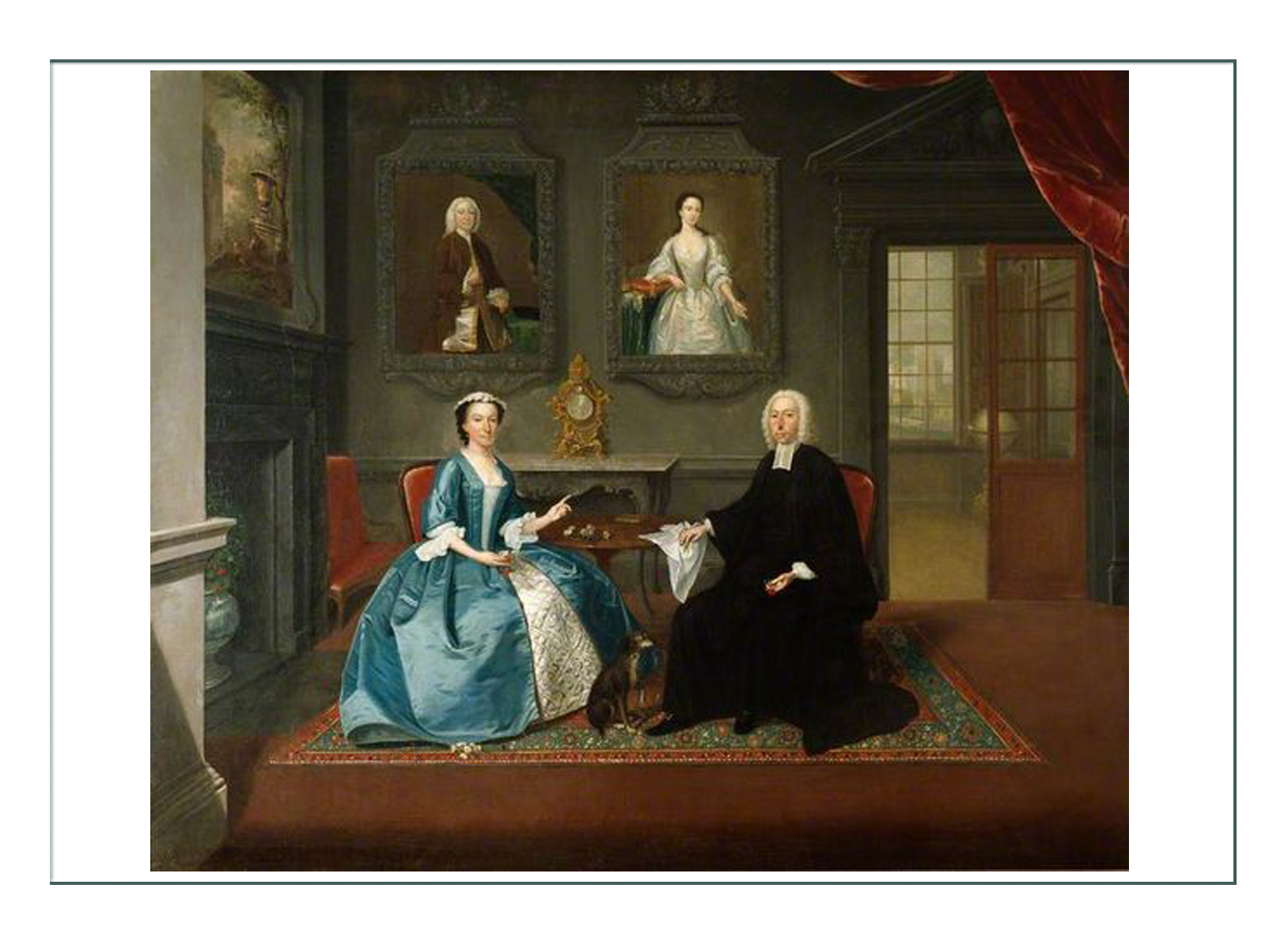
There would have been some struggle between wanting to be independent and strong, and knowing she was “the weaker sex”. At that time, wives were cheated on, and used for political posturing or social status. Coming to America pre Revolutionary War as the highest status, one would guess she was introduced to all the finest the new country had to offer from the beginning, and continued to search for that until her end in 1779.
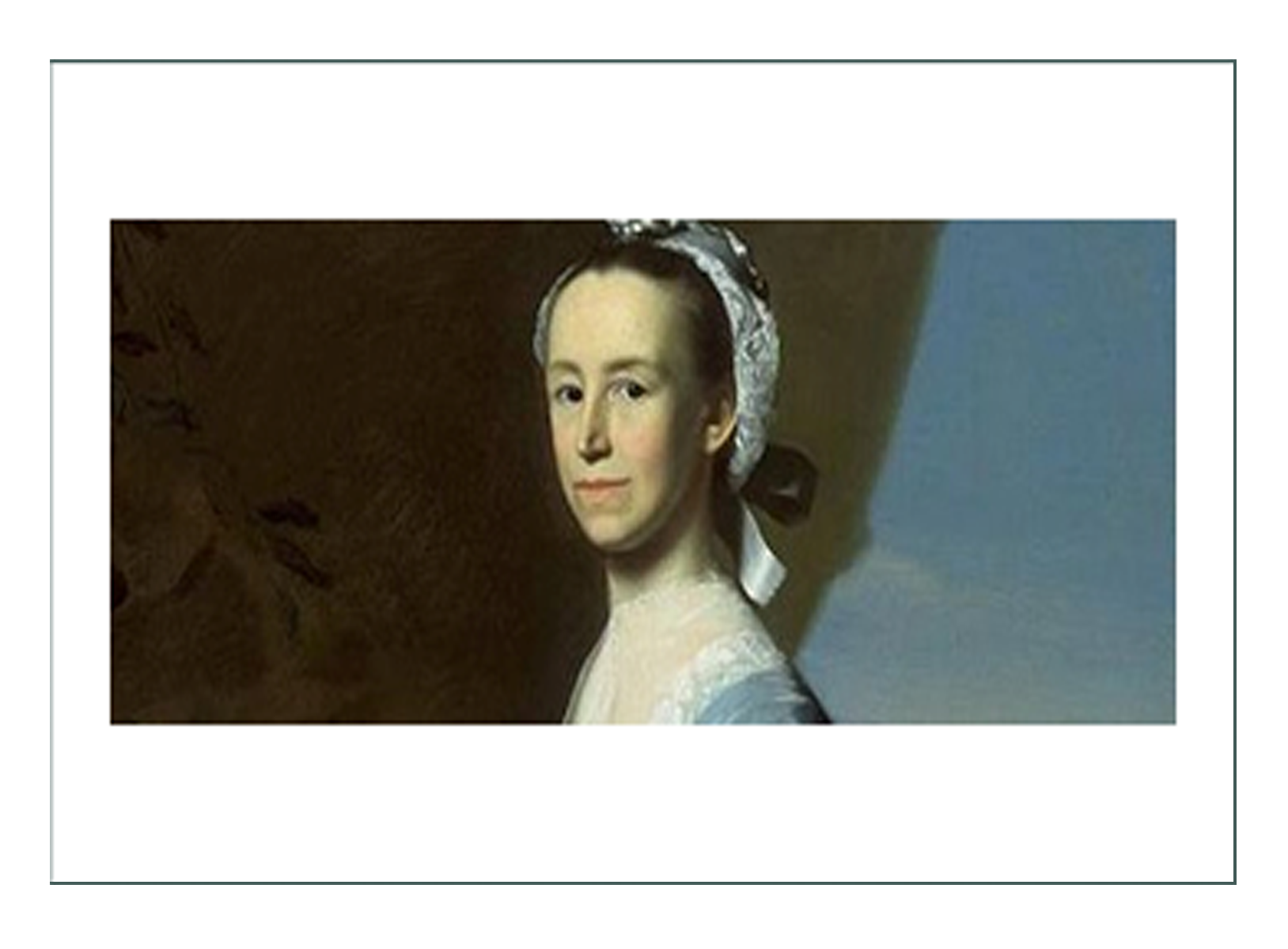
Edward died in 1795. It is confusing in that he appears to have remarried an older woman , as the records confuse him and his son and grandsons named Edward. It makes sense he would have remarried very quickly, as he would have needed a wife to run his plantation.
 NOTES ON FASHION DETAILS IN AMERICA AT THE TIME
NOTES ON FASHION DETAILS IN AMERICA AT THE TIME
1776 to 1800 called “Traditional”
- 1700’s saw improving status of women in American society
- Gown “robe” started as the mantua, a limp garment, then it got stiffened and decorated, then added panniers
- by 1750 mantua had stylized into robe a la francaise or “doll cake”
- After 1760, the robe expanded vertically as well as horizontally – so did hair raise on pomades and pads
- Panniers were done by 1794
- after 1780, “naturalism” Rouseauesque sexual character where butt and breast emphasized took over along with cascading hair
- Georgian 1760 to 1820
- After the French Revolution, everything changed in fashion to Regency
- all had chemises with sleeves, white muslin washable
- fuller sleeves in 1775 (pleats) and narrower by 1790
- strapless stays cut high at armpit to force good posture. Back lacing early on, optional both front and back later
- Conical torso and wide hips
- Tight but comfortable so women could live and work easily like wearing a back brace
- Multiple petticoats for status and warmth, or to get widthPanniers for fancy occasions or court
- mobcaps even at fancy occasions
- graceful folding fan in bone or ivory handles with scenes painted on. Reversable. Silk or parchment
- 1775 had the highest hair ever in history before or after. Up to 36″ with elaborate hats, plus tiny thimble mobcaps way on the peak.
- Satin or taffeta bonnets for any non-special occsion
- walking sticks for men and women
- 1778 added frills on the bodice, sleeves, and along the front of the open robe. Box pleats.
- If not using panniers, would stuff paper in the overskirt, which had a unique rustling sound to this era
- Open robe gowns – bodice joined to skirt, or closed fashion
- Stomachers were pinned to tabs under the robings, or by cross laces, and coverd by neckerchief or large sash. Pinned on sash too a “ribbon band”
- Frilly sleeves with matching tucks had additional lace which was removable, or was on the chemise for easy laundering
- Robe a l’anglaise until 1780’s with “forreau back” which is the seamed point that goes low across the butt and fits the pleated large skirt. Pleats are folded and sewn flat on top of each other, as opposed to “gathered”
- robe a la francaise called SACK in England had back pleats, train, mock stomacher
- robe a la polonnaise was the side wide pannier type.. shorter in this era than it gets later (open robe with attached polonnaise type skirt that pulls up on 3 cords like curtains) over stomacher and outer petticoat
- 1750-60s had fantastic hair
- Whale cartilage used as stiffener at seams in bodices
- Polonnaise and skirt were short – at ankles early. By 1778 were getting longer.Skirt had matching box pleats horizontally and larger; usually two rows. Kind of gave a “Bo Peep” shepherdess look, which would be all the fashion in a couple years in England and france among nobility
- underskirt ornamented with pleats and ruffles or strips of lace, ribbon, or fur
- 1770 fashion plates let people see fashion
- 1780 rump pads instead of hoops
- 1750-1780
- exaggeration of earlier eras – wide panniers and high hair
- then romantic peasant like dress and rid of panniers
- up to 1780 elaborate brocade, satin, damask, strips and printed cottons, taffeta, embroidered wool, plaids
- 1778 chintz, crepe brocade, silk
- light colors dominant
- 2 skirts would be contrasting colors or lighter and darker of the same hue
- 1/2 hoops were used
- pearl necklaces w/diamond clasp
- earrings
- bracelets
- lockets on chains
- pendants on chains
- miniatures on chains
- buckles on girdles and shoes early; later shoes were covered with matching fabric


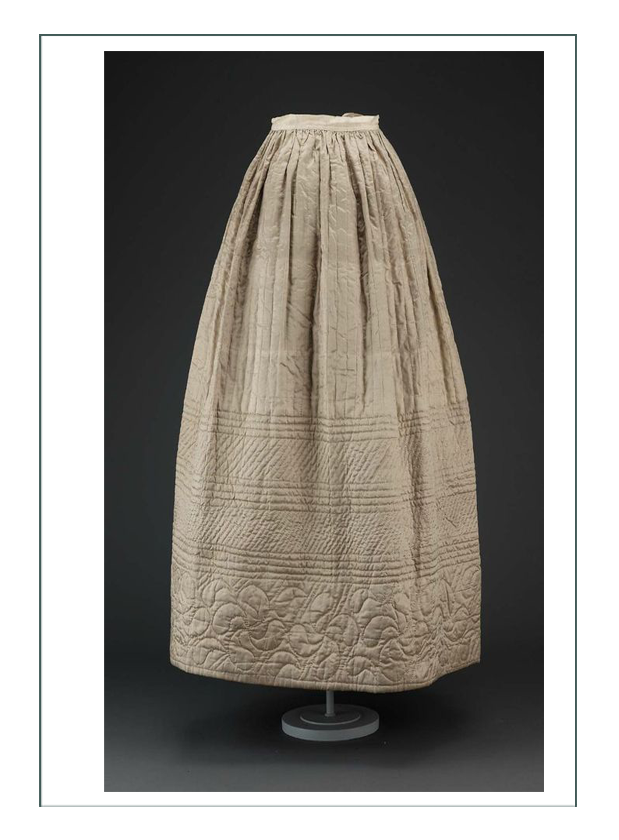
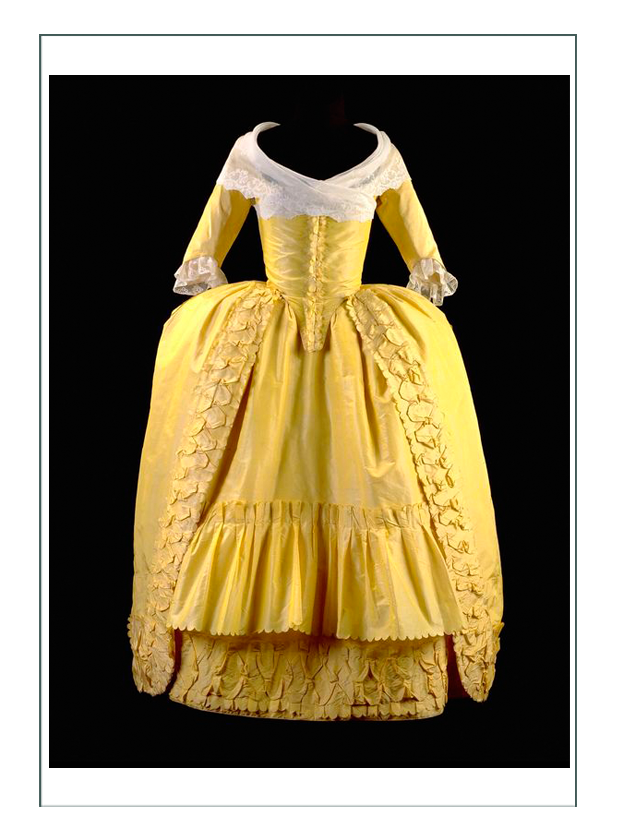
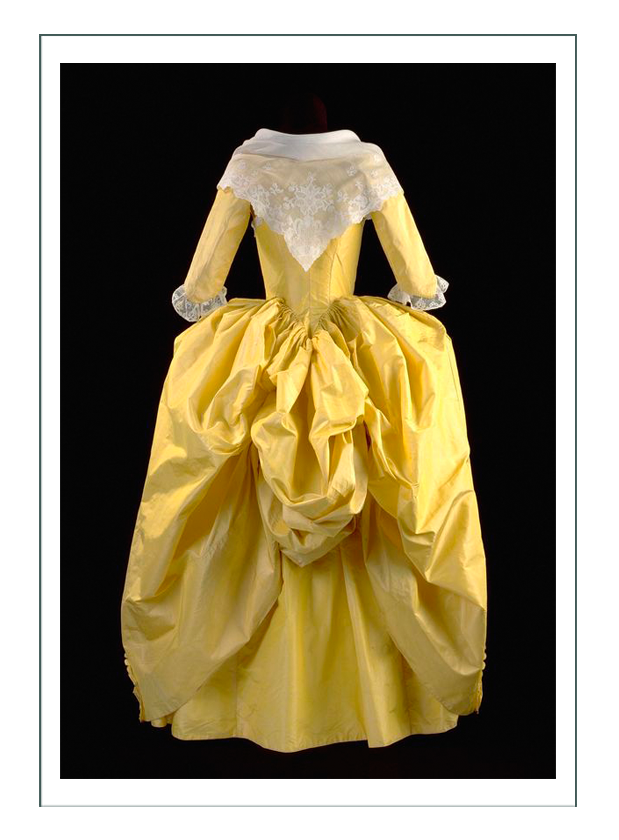
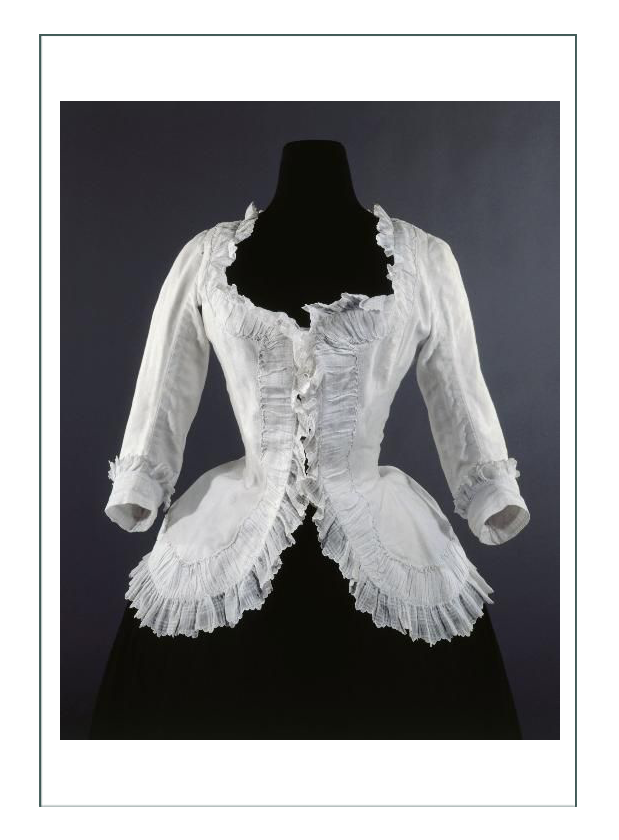
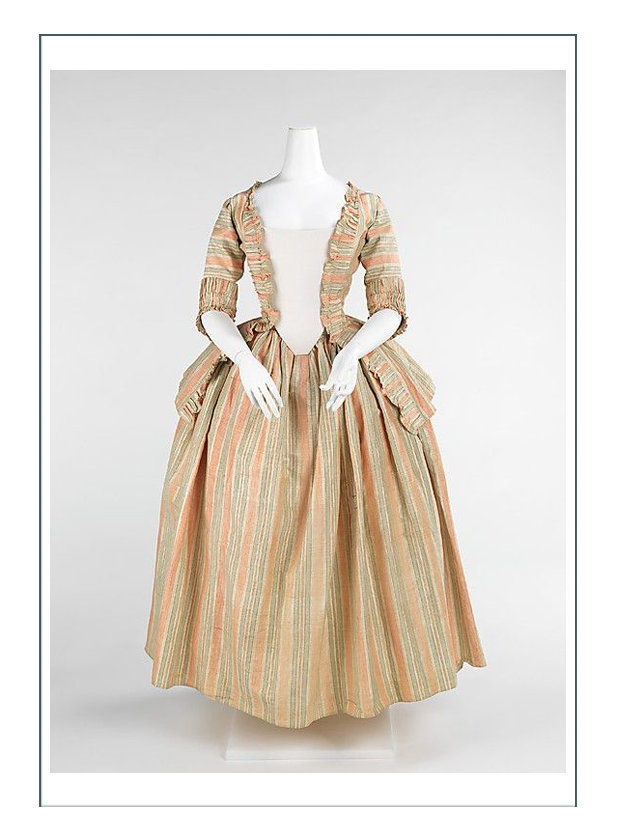
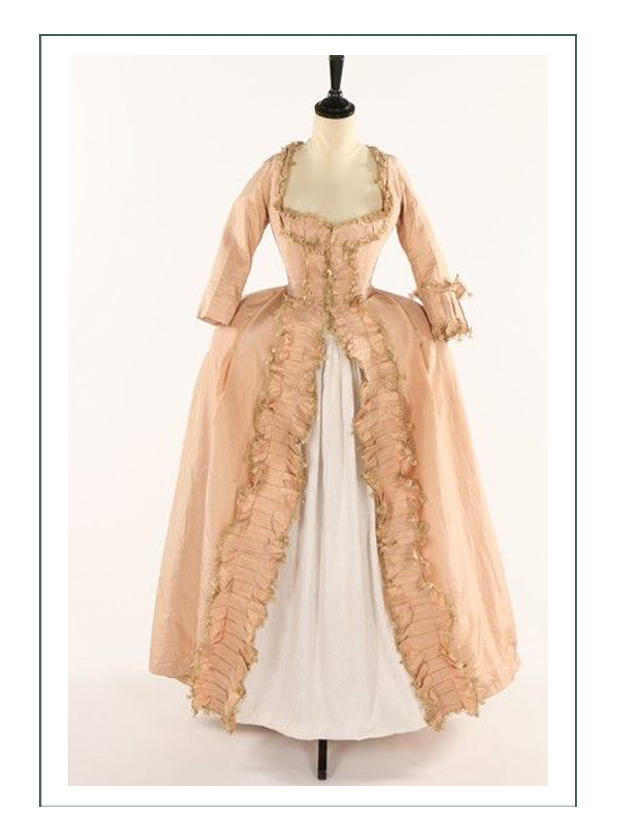

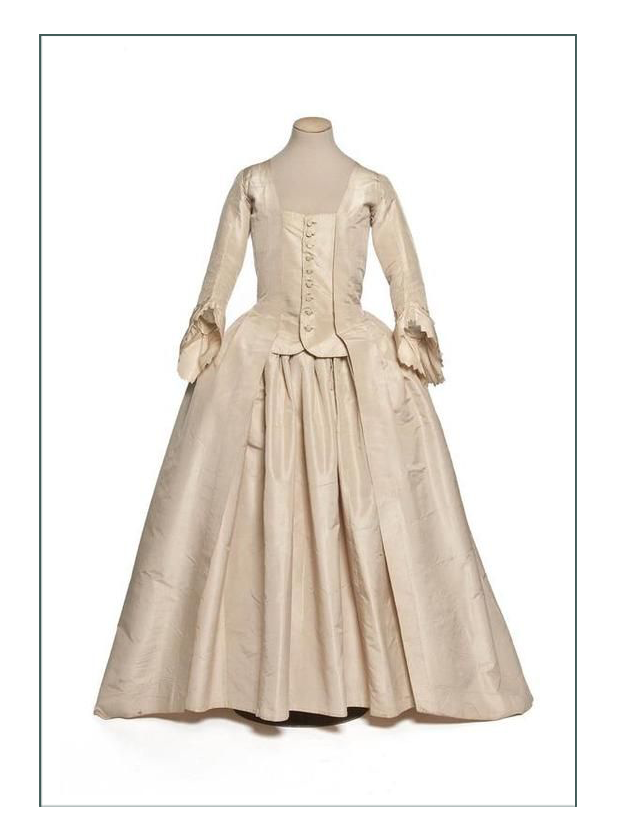
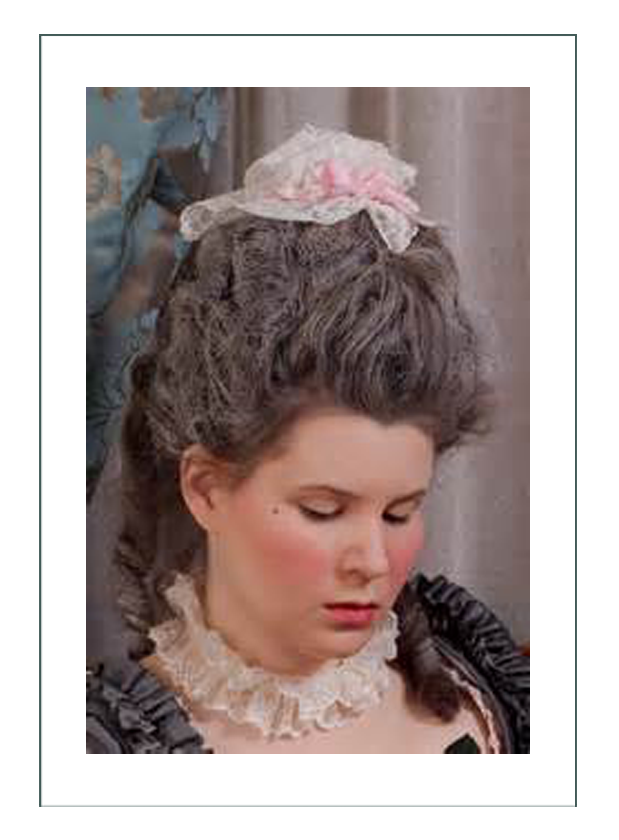
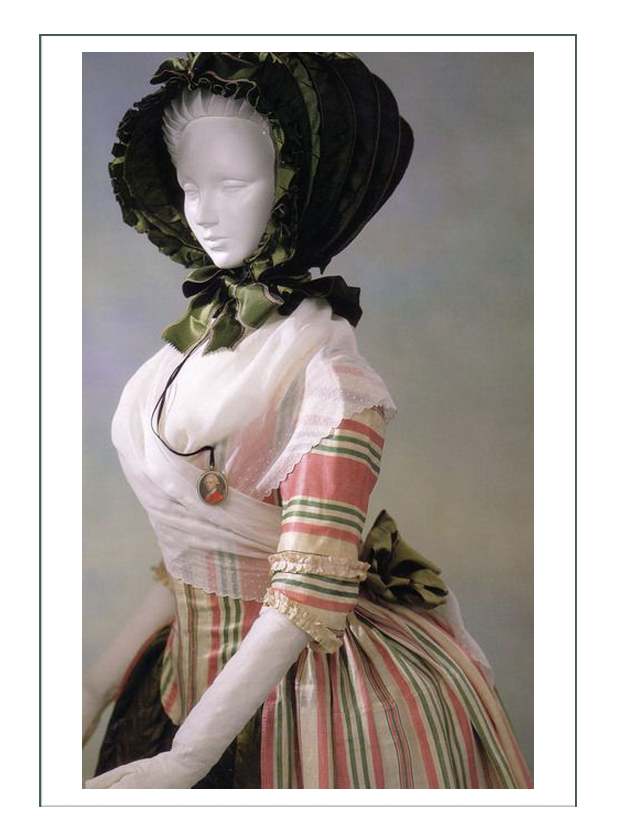
Click to go to Carol’s Design Development Page (next)
Click to go to Carol’s main page with the FINISHED PROJECT
Click to go to Carol’s Historical Research Time & Place Page
